Sumo wrestling is an integral part of Japan’s culture and has been practiced in one form or another for around 2000 years.
In part 1 of this series, we shared everything you need to know if you are new to Sumo, and want to attend the Nagoya Grand Sumo Tournament. If you haven’t read it yet, follow this link.
However, a Grand Sumo Tournament like the one held in Nagoya each summer isn’t the only way to experience sumo. Nagoya also plays host to all 42 active sumo stables for around one month before and during the tournament. Many of these stables open their doors to visitors during the morning hours, allowing them to observe a stable’s morning practice.
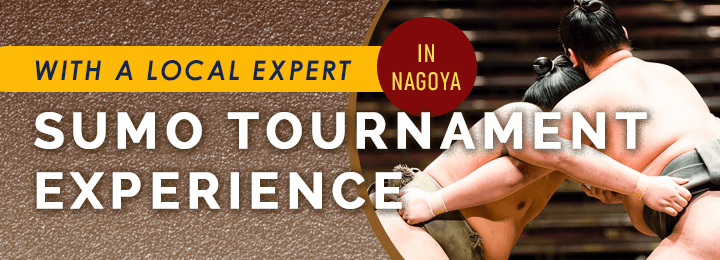
Article Contents
What Is a Sumo Stable?
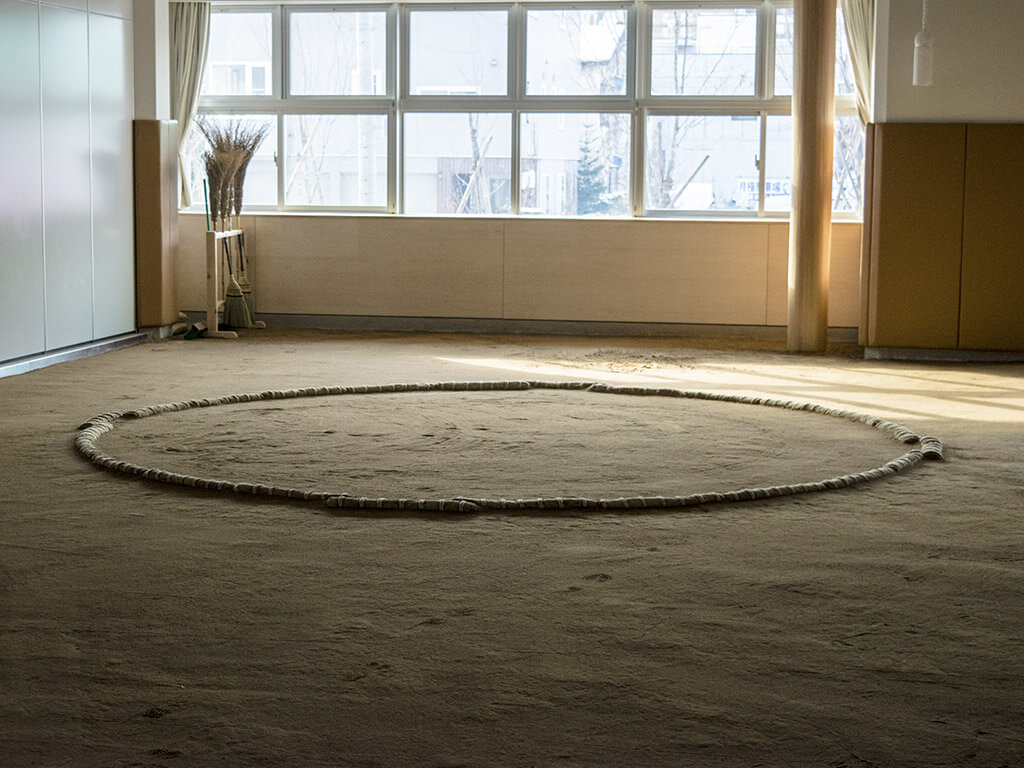
In Japan, there are currently 42 official stables. In these stables (called beya) the sumo wrestlers (rikishi), low and top-level wrestlers alike, live and train together. With very few exceptions once a wrestler joins a Sumo stable, they will stay with the same stable for their entire career. Sumo stables vary in size, with the smallest having only a handful of wrestlers and the largest having around 30.
Each stable is headed by an oyakata (literally “parent figure”), or stable master. Stable masters are always successful retired wrestlers themselves. Their role is to manage and administer their stables and to take care of the wrestlers under their care. They also judge sumo matches and serve as the point of contact for other stables and associations.
Every day, the rikishi at each sumo stable wake up early and begin their training first thing in the morning, called asageiko.
What Is Asageiko and How Can to Watch it
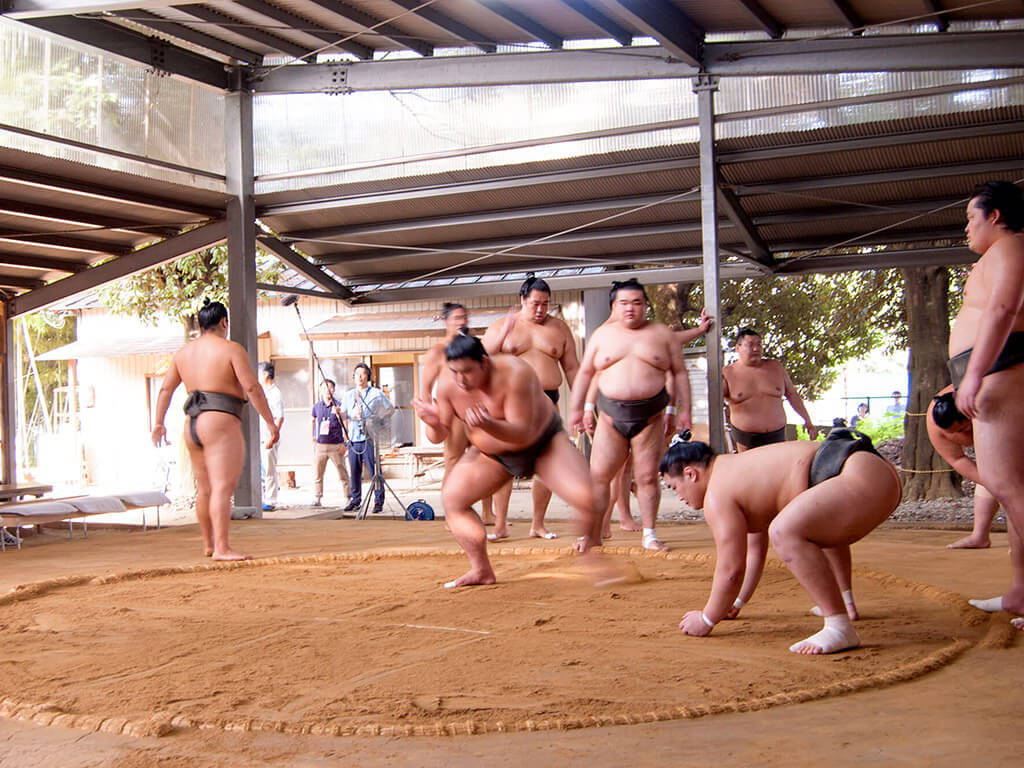
Each sumo stable has its own way of conducting asageiko, but most follow a similar pattern. The training day usually starts around 7:00 (although in some places it might start at 7:30). The youngest wrestlers begin with stretching exercises.
Identifying Rank by Mawashi Color
You can tell they are of a low rank by looking at their loincloth, or mawashi. Those who wear the black mawashi are of lower rank, while those with a white mawashi are of higher rank (sekitori).
Stretching Exercises
The wrestlers are situated around the dohyo (ring) in rows, and one of them begins to lead the count for stretching exercises. The body areas that are stretched the most are from the waist down.
Flexibility Training: Matawari
Although they might not look muscular or particularly flexible, sumo wrestlers work a lot on body flexibility and strength. This flexibility is achieved with the traditional stretching technique known as matawari. This technique requires the sumo wrestler to sit with their legs as far apart as possible. While keeping the knees locked, the fighter must lean forward until his chest touches the ground. If you have never tried this move before, we highly recommend doing so, just to see how difficult it is.
Warming Up with Suriashi
After rigorous stretching, they move on to warming up with suriashi. Suriashi is a movement exercise that involves squatting down and moving forward without standing back up. A rikishi will glide forward in a straight line ideally without any movement of the body up and down. While this might sound easy, it is actually quite difficult.
Top-Level Wrestlers’ Warm-Up: Shiko
While the low-level wrestlers continue to warm up with the suriashi, the top-level wrestlers begin their own stretching and warming-up routine. Shiko is a very important technique in sumo wrestling. A rikishi will plant one foot on the ground while lifting their opposite leg as far up into the air as possible, holding for 2-3 seconds, and then stomping down. This movement helps improve balance and strengthens the core.
After almost an hour of stretching and warming up, the real training begins.
Training Drills and Training Matches
Often they will start by practicing butsukari geiko, where one rikishi stands firm while his opponent rushes at him with all his strength and pushes him across the ring.
Another form of training is called moshiai, where two rikishi fight each other. The loser leaves the dohyo and the winner stays and chooses his next opponent. Sanban geiko tests the sumo wrestler’s endurance; two rikishi continue fighting to the point of exhaustion.
Moshiai and sanban geiko are first done by low-level wrestlers, then among low and top-level wrestlers, and finally among high-ranking fighters. During training, the coaches and the stable chief correct and advise the fighters quite strictly.
If it’s your first time at an asageiko, you will be impressed by the sound of two wrestlers colliding with each other. The large and heavy almost naked bodies pack an immense force and it somehow reminds us of watching a frontal car crash.
Between bouts, brief breaks are taken to collect the sand from around the edge of the dohyo and spread it back out evenly. Breaks are also times for wrestlers to catch their breath, dry their sweat, and take a drink. Top-level wrestlers will have an assistant, usually a low-level wrestler, who during breaks will provide fresh water while also cleaning the sweat from their bodies.
After roughly two hours of intense training, the public portion of practice will end. Although the atmosphere is generally quite strict, the wrestlers themselves are very friendly.

How to Watch and Enjoy Asageiko or Morning Training
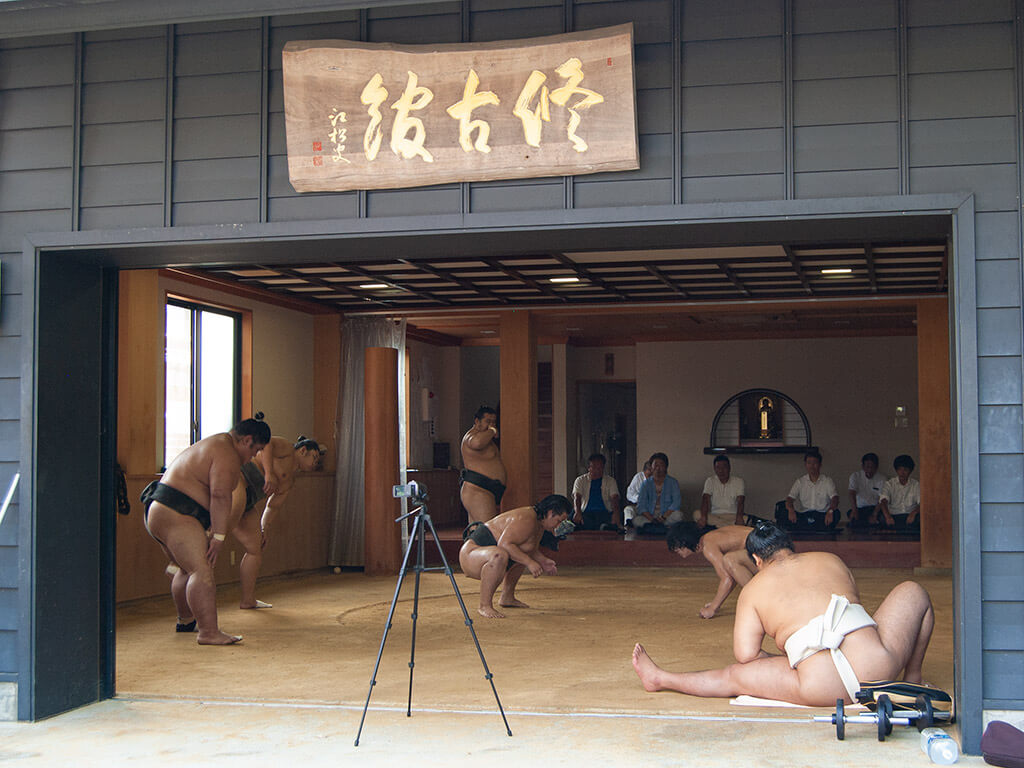
Starting about two weeks before the Grand Summer Sumo Tournament and continuing until the end of the tournament’s 15-day period, it is possible to visit some of the sumo stables and watch the rikishi (sumo wrestlers) during their morning training.
When stables allow visitors to observe asageiko or morning training for free they do have some very important rules that need to be observed. Please remember that asageiko is very important for all wrestlers, it is not a tourist attraction, and so all of the rules are designed to not interfere with their training.
Behavior Rules at Sumo Stables
– Show Respect: The sumo stable is the sumo wrestler’s home. Please show respect when arriving at a stable, with a slight head nod towards the oyakata (coaches) and the rikishi. This will give a very good first impression.
– Turn off mobile phones: As in a movie theater, you need to turn off your phones.
– Do not take pictures with mobile phones: Some sumo stables allow you to take pictures with a digital camera but you should check before taking any photos.
– No flash: Photos can only be taken with digital cameras, but flash photography is forbidden as you could distract the wrestlers while training. If there is no way to silence the shutter of your camera, you should refrain from taking pictures since this can also be a distraction for the wrestlers.
– Do not take videos: It is strictly forbidden to make videos with any device.
– Do not talk: For the total concentration of the wrestlers, you have to be quiet.
– Refrain from eating and drinking: Absolutely do not eat or drink except water for hydration.
– Do not smoke: Some of the coaches might smoke, but visitors are not allowed to do so.
Sumo Stables in Nagoya Where Asageiko Can Be Observed
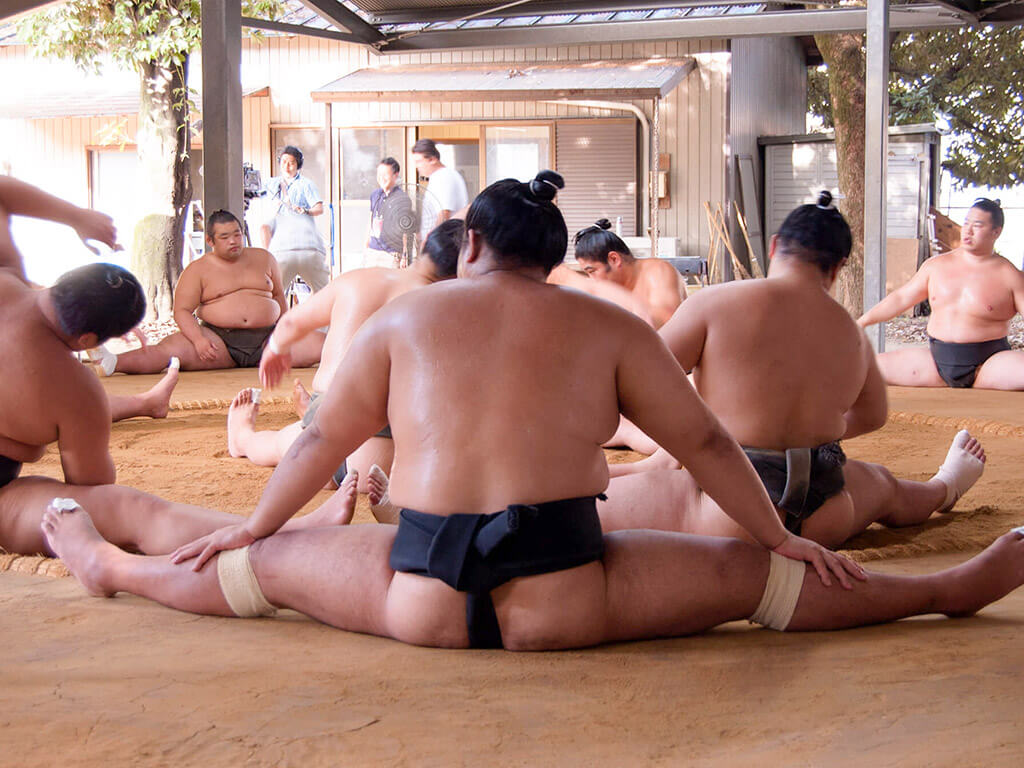
Not all sumo stables allow people to watch their asageiko. Below you will find a partial list of some of the stables in Nagoya where asageiko is allowed to be observed. Please be aware that even the most open stables sometimes need to close their doors to visitors, sometimes with very little notice. Asageiko is free to observe but as such the stables are under no obligation to have an open-door policy every day.
Isenoumi-beya (伊勢ノ海部屋)
Location: Zenko-ji Betsuin Temple
Address: 1-377 Nakaotai, Nishi Ward, Nagoya, Aichi 452-0822
Access: Take the Meitetsu Nagoya line to Naka-Otai Station. From there it is a 5-minute walk.
Telephone: 052-501-1757
Website (Japanese only) | Google Maps
Arashio-beya (荒汐部屋)
Location: Zenkoji Temple
Address: 41-19 Aichicho, Nakagawa Ward, Nagoya, Aichi 454-0807
Access: From the Meitetsu Bus Center, take bus 51 or 54 to Hyaku-cho. Go down at Hosei Danchi bus stop (3 stops total). From there is a 2 minutes walk.
Website (Japanese only) | Google Maps
This post was last updated in April 2025.
Although we strive to provide you with the most accurate and up-to-date information possible, please note that changes may occur nonetheless. We recommend you confirm any relevant information such as event cancelations or changes, opening hours, or possible restrictions using a direct source. Please keep in mind that these sources might be only available in Japanese.
Did you enjoy this article?
Make sure to also check out our other posts about Nagoya and trust us if we say Nagoya is not boring!
Be sure to follow us on Facebook for regular updates on Nagoya, and see our Instagram for pictures and stories about the city!
Tag us 📲
If you have joined an Ukai experience in the past or are planning on doing so in the future, let us know in the comments or on social media and tag us with #nagoyaisnotboring


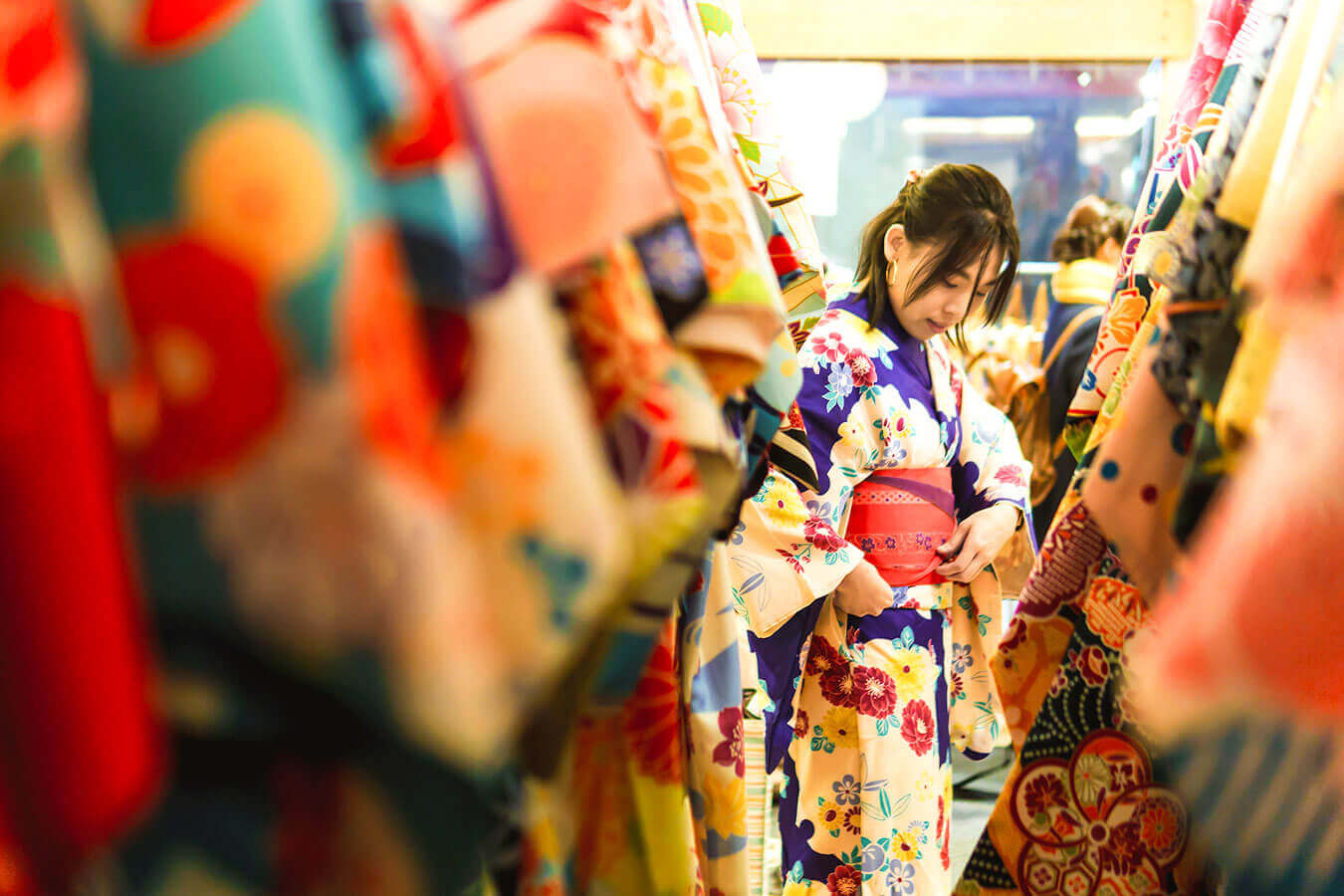
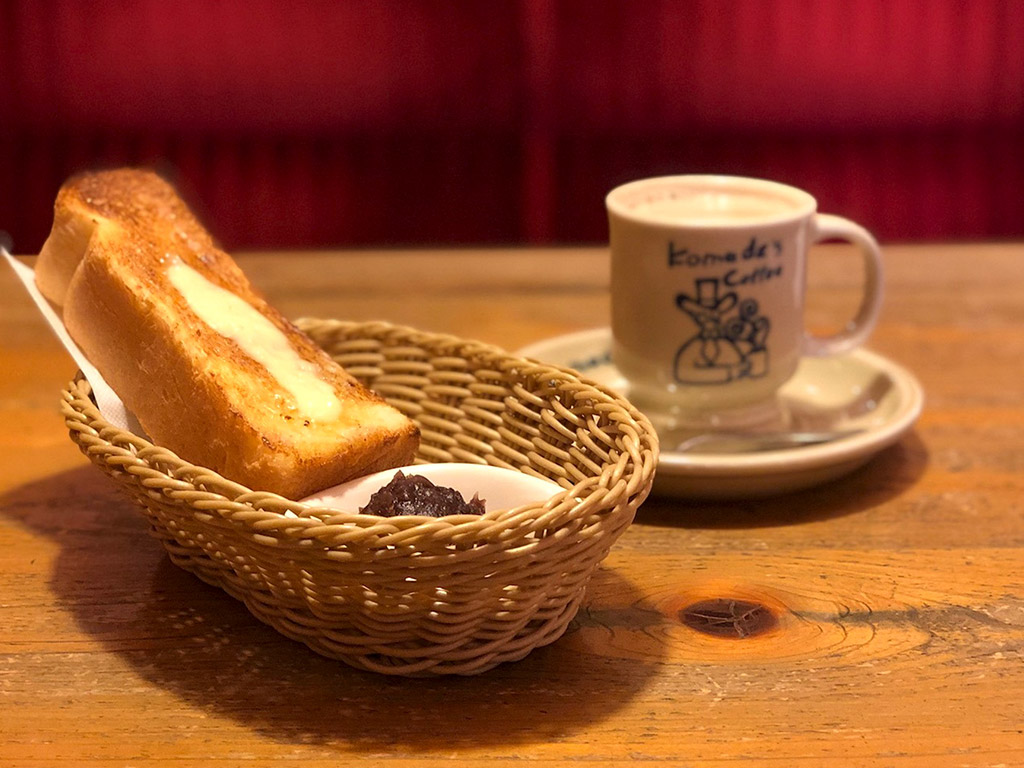
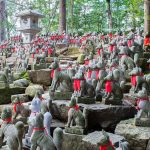

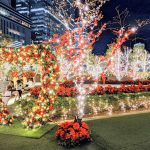
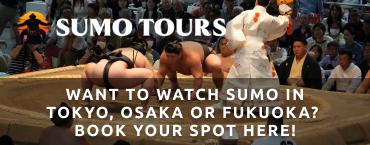

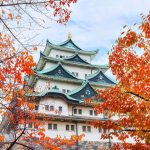

Hi, I’m David a Digital Marketing Specialist currently living in Toyokawa, Aichi Prefecture. I stumbled upon your blog about Nagoya due to my interest in Sumo. Can I ask if you know the nearest stable in my area? Thanks
Hi David, this is Elisabeth expert in Sumo. There was a stable close to your location, the Oguruma stable (尾車部屋), but they closed and were absorbed from another stable that is in Seto.
Another option is to visit Nishiiwa stable (西岩部屋) https://nishiiwabeya.com/
They stay at Toyoake: 愛知県豊明市沓掛町山新田53-1
Best, Elly
Hi Elisabeth, can you please recommend me sumo stable that is opened for visitors to see morning training on 28th or 29th of June, 2024 in Nagoya. I tried to call several ones with help of my hotel in Japan, but they said that many are not training now. Thank you
Hi, Jalorslav
Unfortunately, the sumo wrestlers are not here in Nagoya yet. They will start to come around July 2nd.
Hi, I am Alfred. I will be traveling to Nagoya next week with my family.
I will to take my young boys to see Sumo Practice in the morning. Would you advise which Beya is near Nagoya and they are open to public in the month of June.
Thank you
Hi Alfred, this is Elisabeth Llopis the expert guide in Sumo. Sumo wrestlers are coming from Tokyo to Nagoya around the end of June.
A beya in Nagoya that I recommend visiting is Kokonoe Beya, located in the Tokugenji Temple:
https://goo.gl/maps/BW13TAbkFKY6eiAWA
Hello,
My husband and I are staying in Ryogoku area of Tokyo. We would like to catch a sumo practice if possible. I can’t find where to go online and it appears the Arashio stable they are not training from
Aug 11-15. Any other suggestions?
Krysta & Andrew Cook
Hi Krysta, one of the friendly sumo stables is Isenoumi Beya. They use to train from 7:30 to 9:30.
Location: 1-22-2 Sengoku, Bunkyo-ku, Tokyo 112-0011
Nearest station: Toei Mita Line Sengoku Station (Exit A2)
Hope you can get to see any morning sumo training
Best, Elly
Hello,
My family and I will be in Tokyo from 12/27/23 to 1/1/24. Do you think it will be possible to attend a sumo training on those dates?
Thank you for your help!
Pilar
Hi Pilar,
There is the January Tournament in Tokyo that is held from January 14, 2024, to January 28, 2024. You can walk around the Kokugikan area where the Sumo stables.
If you need a tour for the Sumo watching and/or a tour guide for attending a Sumo morning training, let me know. Kind regards.
hola estare en tokio desde el 29 febrero al 3 de marzo, crees que sea posible ir a algun entrenamiento en tokio en esa fecha? sabes donde se pueda visitar un entrenamiento en osaka?
Hello Elisabeth,
Would you happen to know if there are any shops around Nagoya that sell sumo items or memorabilia? I was in Nagoya in January and tried searching online but Google didn’t help me at all to find such a place that would be open to visit even when the Nagoya basho is not ongoing. Thank you very much and best regards!
Matthew
Hi Matthew, in Nagoya to do sumo shopping the only way is to attend a sumo tournament. Inside the sumo venue are shops on the 3 floors selling all kinds of merchandising.
Apart from that, unfortunately there is no shop selling anything in the off-season. But I know a small temple that sells a sumo figurine. Go to Zenkoji Betsuin Gano Temple.
https://maps.app.goo.gl/thrsXDsL3UUYVvHm7
The area is one of the hidden treasures of Nagoya. Hope you like it!
Hello Elisabeth,
Thank you very much for the response. I will definitely check out the Zenkoji Betsuin Gano Temple next time I’m in Nagoya. Hopefully I’ll also be around the area in July so I could watch some of the Nagoya basho. Thanks again; I really appreciate the help!
Hello, we’ll be in Japan end of June-July 11, 2024. We’re missing the Tokyo practice days & just miss the Nagoya tournament. I’m wondering about planning a trip to Nagoya around June 29 to watch a practice session in Nagoya. Do you know of a tour guide who could guarantee us access to the practice session?
Hi Rebekah, let me check on our tour guides. For this kind of request please send us an email to info@nagoyaisnotboring.com.
Thank you Elisabeth for your reply. Is there a chance I can see a sumo morning training or a match these days, for example in Osaka or other city? I am flying back to Europe on June 30th.
Hi Elisabeth, My son and I are in Nagoya July 11 – 14. We have booked seats for the sumo tournament for Sunday 13 (looking incredibly much forward to that!). To really get in the mood, is there perhaps a chance to see the wrestlers do a last practice session Friday or Saturday before the tournament starts on Sunday 13th?
Thank you for your message.
Regarding the sumo morning training on July 13th, we’re currently at full capacity for the Nagoya sumo season and aren’t able to accommodate additional guests for that day.
Should anything change, we’ll be sure to let you know. In the meantime, please don’t hesitate to reach out by email (info@nagoyaisnotboring.com).